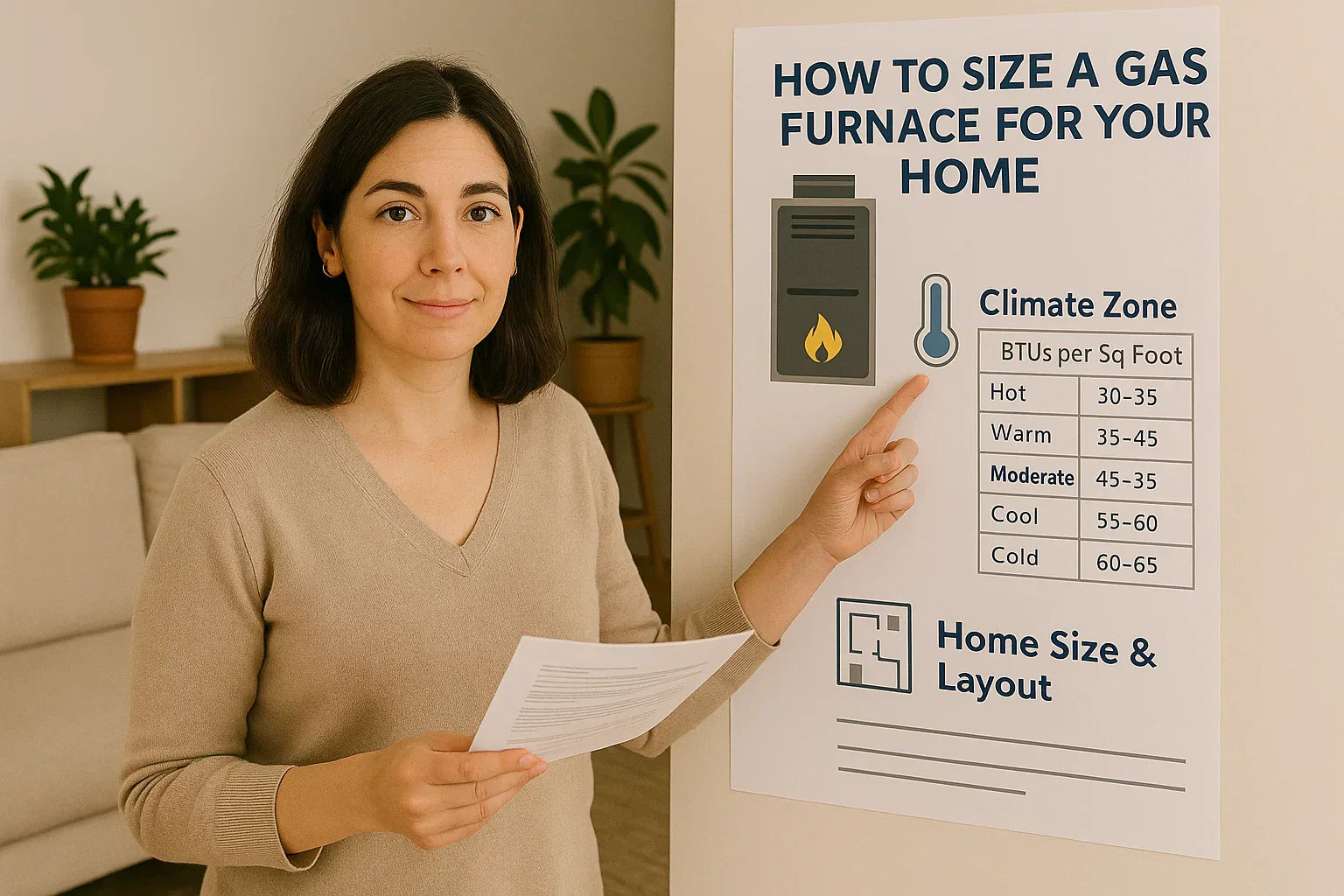🔍 Introduction: Why Correct Sizing Matters
Choosing the right size gas furnace is critical for comfort, efficiency, and longevity. An undersized furnace will struggle to heat your home, while an oversized furnace may short-cycle, wasting energy and increasing wear.
This guide will help you:
-
Understand BTU basics for gas furnaces
-
Learn climate-based sizing rules
-
Factor in insulation, ceiling height, and layout
-
Use practical tools to estimate your home’s needs
-
Know when to get a professional Manual J load calculation
🔥 What Are BTUs?
BTU (British Thermal Unit) measures the heat output of your furnace.
-
1 BTU = energy needed to raise 1 pound of water by 1°F.
-
Gas furnaces are rated in BTU per hour (BTU/hr).
🌎 Climate-Based Sizing Guidelines
Your climate plays a major role in BTU needs per square foot:
| Climate | BTU/Sq Ft (Approx) |
|---|---|
| Warm (FL, TX) | 25-35 |
| Moderate (NC, VA) | 35-45 |
| Cold (MN, NY) | 45-60 |
Example: For a 2,000 sq ft home in a moderate climate (40 BTU/sq ft), your heating requirement would be ~80,000 BTU/hr.
See HVAC guide for more climate factors.
🧱 Insulation, Ceiling Height & Layout Impact
-
Insulation: Well-insulated homes need fewer BTUs to heat.
-
Ceiling Height: Higher ceilings increase volume and heating requirements.
-
Layout: Open floor plans distribute heat better, potentially lowering BTU needs compared to compartmentalized layouts.
📏 Practical Sizing Formula
(Square footage of home) x (BTU per sq ft based on climate) = Estimated BTU/hr needed
✅ Adjust down by 10-20% for excellent insulation.
✅ Adjust up by 10-20% for poor insulation or high ceilings.
🧮 Using Online Calculators
Tools like the PickHVAC Furnace Size Calculator can help you get a quick estimate, but for accurate sizing, a Manual J calculation is recommended.
🛠️ What Is a Manual J Load Calculation?
A Manual J calculation is a professional method for precisely determining your home’s heating (and cooling) needs based on:
-
Square footage
-
Insulation levels
-
Window type and count
-
Air infiltration rates
-
Local climate
Many HVAC professionals provide this service before installation to ensure your furnace will heat efficiently without oversizing.
⚖️ Oversizing vs. Undersizing: What’s Worse?
-
Oversizing: Leads to short-cycling, uneven heating, higher energy bills, and faster wear.
-
Undersizing: Results in insufficient heat during peak cold and extended runtime.
Slight oversizing (~10%) is acceptable for safety, but significant oversizing should be avoided.
💡 Conclusion: Size Your Furnace with Confidence
Proper furnace sizing ensures:
✅ Comfort throughout your home
✅ Energy efficiency
✅ Longer furnace lifespan
✅ Lower heating bills
Before purchasing, use these guidelines and consider a Manual J calculation for best results.
👉 Next Step: Explore efficient gas furnaces sized for your home at The Furnace Outlet and take the next step toward reliable, comfortable heating.
In the next article we will know more about: Gas Furnace Maintenance Tips: Extend Your System’s Lifespan







